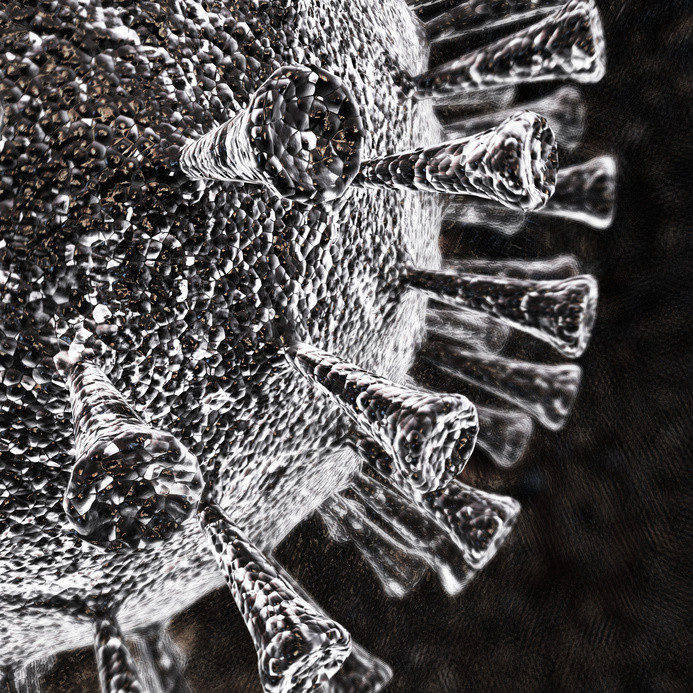
Microbiologists at NYU Langone Medical Center say they have what may be the first strong evidence that the natural presence of viruses in the gut — or what they call the ‘virome’ — plays a health-maintenance and infection-fighting role similar to that of the intestinal bacteria that dwell there and make up the “microbiome.”
In a series of experiments in mice that took two years to complete, the NYU Langone team found that infection with the common murine norovirus, or MNV, helped mice repair intestinal tissue damaged by inflammation and helped restore the gut’s immune defenses after its microbiome had been wiped out by antibiotic therapy.
In a report on their work to be published in the journal Nature online Nov. 19, researchers say they also found that MNV bolstered the immune system in fighting off tissue damage.
“Our research offers compelling data about the mutually supportive relationship between viruses and bacteria in the mouse gut and lays the groundwork for further research on precisely how the virome supports the immune system, which likely applies to humans, as well,” says senior study investigator Ken Cadwell, PhD, an assistant professor at NYU Langone.
“We have known for a long time that people get infected all the time with viruses and bacteria, and they don’t get sick,” says Cadwell. “Now we have scientific evidence that not every viral infection is bad, but may actually be beneficial to health, just as we know that many bacterial infections are good for maintaining health.”
According to Cadwell, until now, scientists have had mostly trace genetic evidence of a virome’s existence, but none to confirm its normal presence in the gut or to clarify whether it plays a harmful, neutral, or helpful role.
For their research, the team relied on their previous studies in mice genetically bred to develop inflammatory bowel disease, a condition believed to be caused by microbiome bacteria. The research showed that chronic MNV infection in these susceptible mice could produce the same inflammatory damage to intestinal tissue as chronic bacterial exposure, suggesting a similar, immune-triggering role.
In the new study, Cadwell and his colleagues fed MNV to mice bred without normal gut bacteria and whose immune systems and intestines were underdeveloped from the lack of bacterial stimuli and nutrients. Immune system T cells and B cells were lacking, and nutrient-absorbing gut projections, called villi, were shrunken and thinner than in normal mice, with smaller-than-normal surrounding tissue in the crypts between villi.
After two weeks of MNV infection, the mice, which were kept strictly isolated from exposure to any other germs, showed nearly full restoration of their immune systems and almost complete reversal of intestinal lesions.
Restorative results were similarly achieved in normal mice given MNV, whose gut microbiome had recently been wiped out by antibiotic treatment. The T cell levels in their blood doubled, and B cell antibodies were detectable in both samples of gut tissue and in the blood.
Additional tests confirmed that the MNV-mediated healing relied on increased immune system signaling by antiviral type 1 interferon proteins, confirming the virus’ key role in driving the immune response.
In another series of tests designed to mimic the impact of antibiotic overuse in people and gauge any protective effects from MNV infection, researchers fed normal mice a chemical damaging to gut tissue. All mice had been previously treated with antibiotics and depleted of bacteria. Mice pretreated and infected with MNV lived longer, had longer villi and less gut tissue damage than those not infected. The MNV-infected mice also had significantly less water lost through diarrhea and less tissue overgrowth from ulcers and fluid buildup, all signs of reduced damage in the gut.
Cadwell says the team next plans to sort and characterize the health harms and benefits of other gut viruses and how each interacts or behaves differently with the microbiome. He also plans to investigate whether certain viruses are harmful or beneficial only to specific groups of people.
Cadwell also cautions that the research does not suggest that people should consider infecting themselves with any virus. As with bacteria, he says, too many of them can be hazardous to health.
Funding support for the study was provided by the National Institutes of Health grants R01 DK093668, and P30 CA016087. Additional support was provided by the Ralph S. French Charitable Foundation, the NYU Whitehead Fellowship, Vilcek Fellowship, and the Erwin Schrodinger Fellowship from the Austrian Science Foundation.
Besides Cadwell, other NYU Langone researchers involved in these experiments were lead study investigators Elisabeth Kernbauer, PhD, and Yi Ding, MD, PhD.
Story Source:
The above story is based on materials provided by NYU Langone Medical Center. Note: Materials may be edited for content and length.
Journal Reference:
- Panagiotis Ntziachristos, Aristotelis Tsirigos, G. Grant Welstead, Thomas Trimarchi, Sofia Bakogianni, Luyao Xu, Evangelia Loizou, Linda Holmfeldt, Alexandros Strikoudis, Bryan King, Jasper Mullenders, Jared Becksfort, Jelena Nedjic, Elisabeth Paietta, Martin S. Tallman, Jacob M. Rowe, Giovanni Tonon, Takashi Satoh, Laurens Kruidenier, Rab Prinjha, Shizuo Akira, Pieter Van Vlierberghe, Adolfo A. Ferrando, Rudolf Jaenisch, Charles G. Mullighan, Iannis Aifantis. Contrasting roles of histone 3 lysine 27 demethylases in acute lymphoblastic leukaemia. Nature, 2014; 514 (7523): 513 DOI: 10.1038/nature13605
